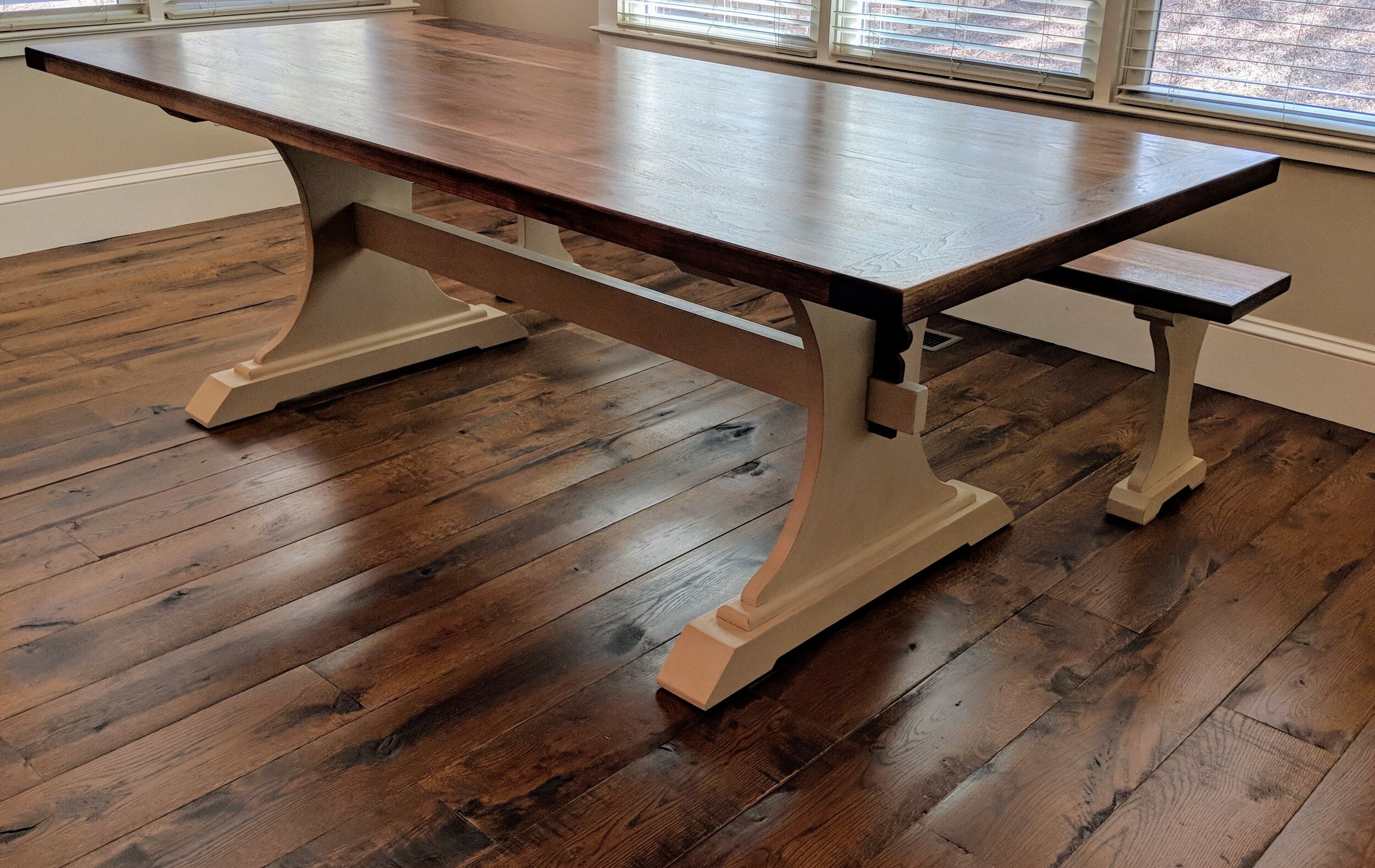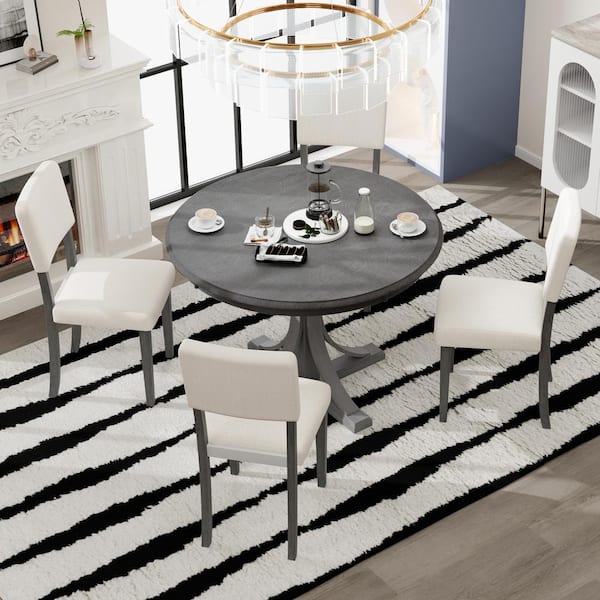Upgrade Your Furniture with Custom Dining Room Table Legs
Upgrade Your Furniture with Custom Dining Room Table Legs
Blog Article
From Standard to Modern: Discover the Suitable Eating Room Table Legs for Your Design
While traditional styles such as cabriole and transformed legs evoke a feeling of timeless elegance, modern styles like hairpin and geometric choices present a possibility for striking visual rate of interest. As you take into consideration these elements, the concern continues to be: just how can you seamlessly integrate these diverse leg styles to produce an unified dining experience?
Understanding Table Leg Styles
The range of dining-room table leg styles can dramatically affect both the aesthetic appeals and functionality of the room. Each leg style adds distinct aesthetic elements and useful functions, satisfying diverse layout preferences and use needs. Comprehending these designs is crucial for choosing the right dining table that straightens with your general indoor design vision.
As an example, tapered legs supply a clean, timeless appearance that can boost a space's beauty, while stand bases offer stability and optimize legroom, making them perfect for smaller spaces. Hairpin legs, a trademark of mid-century modern-day design, introduce an industrial style, permitting an airy, open feeling. Trestle legs evoke rustic beauty, giving robust assistance and a feeling of eternity.
Additionally, the option of products plays a substantial function. Wooden legs can bring warmth and structure, whereas steel alternatives usually share a smooth, contemporary ambiance. Inevitably, understanding table leg styles is crucial for creating a cohesive dining location that mirrors individual design while making sure functionality and convenience. By thoughtfully considering these aspects, you can enhance both the aesthetic and functional appeal of your eating space.
Conventional Table Leg Options
When picking dining-room table legs, standard choices commonly personify timeless elegance and craftsmanship. These styles reflect an abundant heritage and a dedication to quality, making them ideal for those that appreciate traditional aesthetic appeals.
Among the most legendary traditional leg designs is the cabriole leg, defined by its elegant curved form. This style frequently includes decorative carvings and is most generally found in Queen Anne and Chippendale furniture. One more popular option is the transformed leg, which boasts a collection of smooth, rounded shapes that supply a timeless appearance while preserving stability.
Furthermore, the straight leg, while easy, offers a unadorned and sturdy structure that can blend perfectly with a selection of tabletop styles. For those attracted to ornate describing, claw-and-ball feet legs stimulate a sense of splendour and can serve as a sensational prime focus in any type of dining space.
Last but not least, pedestal bases, although not strictly legs, provide an alternative conventional choice that allows for ample legroom and can be wonderfully sculpted. Each of these traditional leg styles adds to the total atmosphere of a dining-room, weding feature with visual appeal.

Modern Table Leg Styles
Modern table leg styles provide a varied series of styles that emphasize ingenious materials and tidy lines. These designs commonly prioritize capability while functioning as striking focal factors within an eating room. Minimal visual appeals prevail, with legs crafted from products such as metal, glass, and crafted timber, which contribute to a airy and contemporary feel.
One prominent style is the hairpin leg, defined by its slender, conical structure that provides stability without frustrating the table top (dining room table legs). This design is usually discovered in mid-century modern-day furniture and can effortlessly enhance numerous table shapes. One more fad is the use of geometric shapes, where legs might tackle unbalanced or angular forms, including visual interest and a touch of creativity

Mixing Designs for Distinct Areas
Frequently, home owners seek to create distinct dining rooms that show their personal design by mixing numerous layout components. This method enables the incorporation of diverse appearances, causing a harmonious yet unique environment. For instance, pairing a rustic wood table with sleek, modern-day steel legs can develop a distinctive contrast that boosts the area's overall appeal.
In addition, integrating vintage table legs with modern table tops can evoke a sense of background while preserving a contemporary sensibility. Such mixes not only showcase private preference however likewise motivate creativity, allowing homeowners to curate a space that really feels both personal and welcoming.
Color plays a vital role in this blending procedure; choosing table legs that match or contrast with the existing color pattern can enhance visual passion. For example, whitewashed legs can soften the boldness of a dark table surface, developing a balanced visual.
Tips for Choosing the Right Legs
Choosing the right table legs is vital for attaining both functionality and visual allure in your dining space. Begin by thinking about the general style of your look at here space. Traditional settings take advantage of legs that include elaborate carvings or turned styles, while contemporary spaces may call for streamlined, minimal styles.
Next, assess the height and security of the legs. dining room table legs. Typical table range in between 28 to 30 inches in height, so guarantee the legs match this dimension for convenience. Furthermore, robust products, such as wood or steel, can improve security and longevity
Review the leg form too-- choices consist of directly, tapered, or stand designs. Straight legs offer a timeless look, while conical legs can add a touch of style. Pedestal bases provide adequate legroom and are ideal for smaller sized rooms.
Verdict
In summary, choosing the perfect eating area table legs needs careful factor to consider of both modern and standard designs. By balancing leg design, elevation, and product with the general décor, a cohesive and welcoming atmosphere can be attained.
The range of dining area table leg designs can dramatically influence both the appearances and functionality of the room. Eventually, understanding table leg learn the facts here now styles is necessary for creating a cohesive dining location that mirrors individual design while making sure usefulness and comfort.One of the pop over here most renowned traditional leg designs is the cabriole leg, identified by its graceful bent shape. Straight legs use a classic appearance, while tapered legs can include a touch of style.In recap, choosing the excellent dining room table legs calls for careful factor to consider of both traditional and modern styles.
Report this page